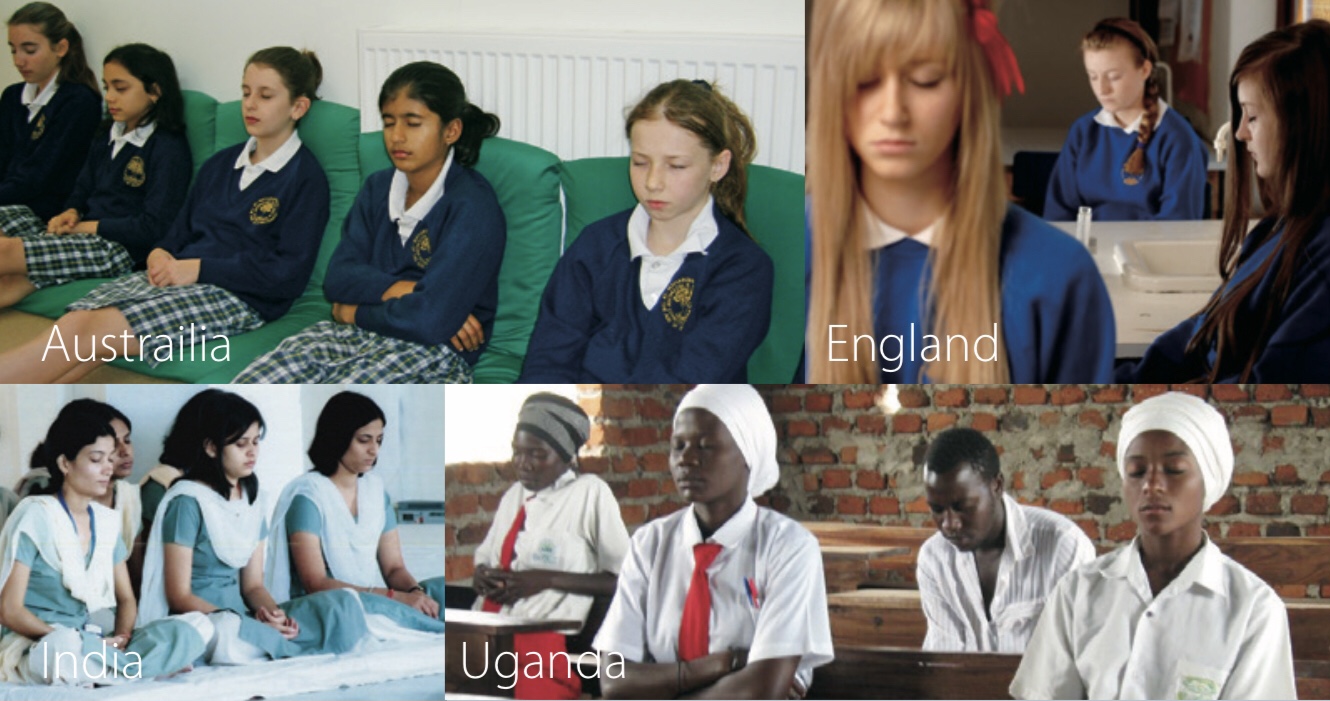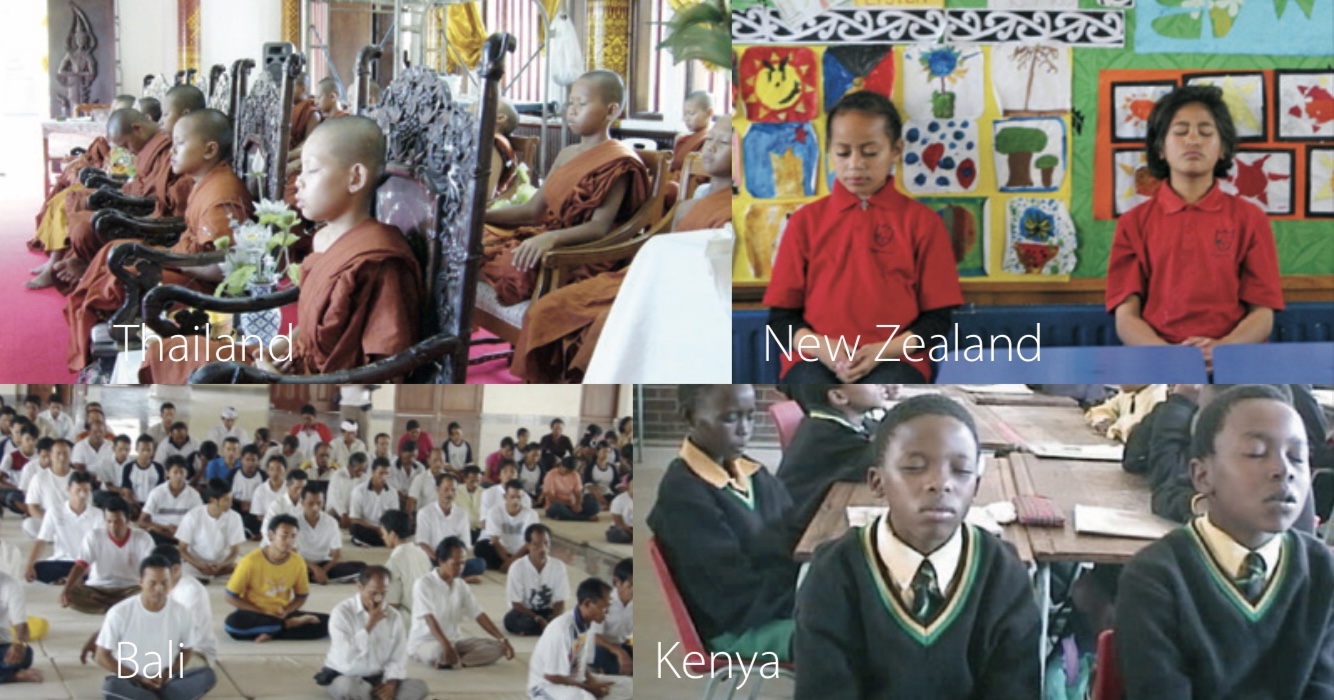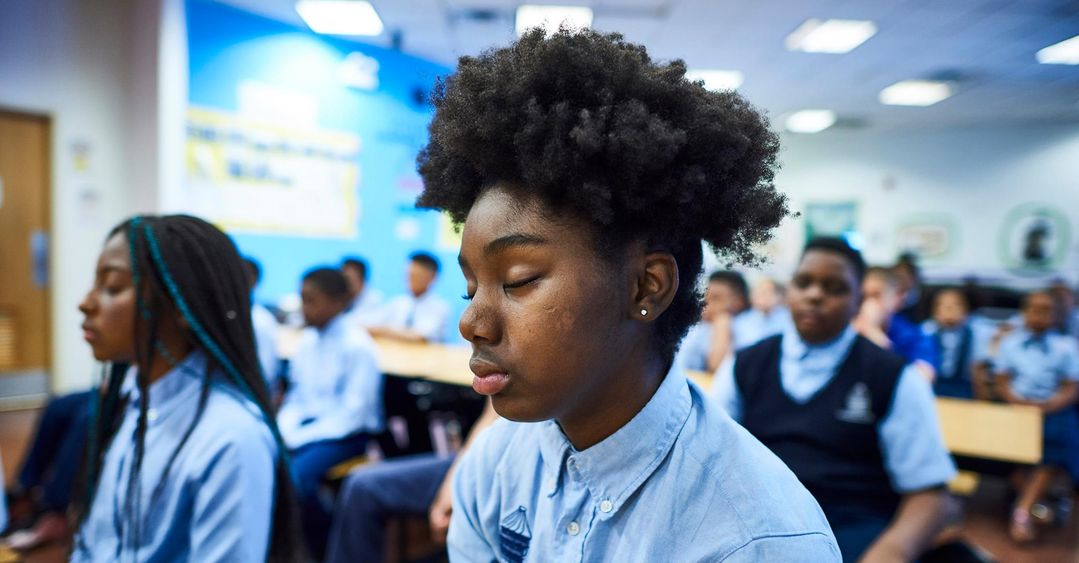
- Inspiring People -
- 8mins -
- 750 views
How Daily mindfulness & Meditation Improves Behaviour and stress levels in school children
With local and global affairs beyond their control, children at schools around the world are finding social and emotional healing—and a reinvigorated readiness to learn—with programs of daily mindfulness and transcendental meditation sessions.
From Baltimore to Bali, Chicago to Canberra, “Quiet Time” is gaining popularity in schools
Mindfulness, an umbrella term for a range of practices, is about observing your emotions and state of mind, without judgment. This can be done during sitting meditation, walking meditation, activities such as yoga and even while eating.
Though few public schools have the budget to hire a full-time mindfulness teacher, many have been introducing mindfulness in the classroom since the coronavirus pandemic shuttered buildings and thrust children into their at times stressful and chaotic home environments.
Others have included mindfulness classes since as far back as 2012. Suspensions and other disciplinary actions have dropped off dramatically as children learned to understand their emotions and how to manage them, reducing behavioural issues across the board.
Some teachers are integrating discussions about emotions into daily lessons or starting class with a short mindfulness practice to help everyone feel centred and prepared to learn, while others are sharing mindfulness apps and using online mindfulness videos.
Here are just a few examples of successful meditation and mindfulness programs in different parts of the world.
Source: Hechinger Report

A Quiet Transformation in San Francisco
When San Francisco’s Visitacion Valley Middle School first introduced Quiet Time (QT), a stress-reduction program that includes Transcendental Meditation as an optional activity, in the spring of 2007.
The program consists of two periods, 15 minutes each in the morning and afternoon, when students may choose to sit quietly or meditate. This promotes deep relaxation and a sense of well-being and allows students to clear their minds.
These sessions also help students prepare themselves for positive academic and social interactions, which has led to a significant reduction in suspensions and truancies. In addition, the approach improves faculty retention.
Two external organisations supported Visitacion Valley Middle School’s implementation of the Quiet Time program. The Center for Wellness and Achievement in Education is a San Francisco nonprofit organisation that specialises in meditation-based stress-reduction programs.
The organisation works with and receives funds from several groups, such as the David Lynch Foundation, to implement QT and other wellness programs in schools. Full story.
Source: Edutopia.org

Baltimore behaviour breakthrough
The Robert W. Coleman Elementary School in Baltimore has been doing something differently when disruptive students act out — offering meditation, mindfulness and yoga classes — and they have the science to back them up.
The Holistic Life Foundation (HLF) is a Baltimore-based nonprofit organisation committed to nurturing the wellness of children and adults in underserved communities. Through a comprehensive approach which helps children develop their inner lives through yoga, mindfulness, and self-care, HLF demonstrates deep commitment to learning, community, and stewardship of the environment. HLF is also committed to developing high-quality evidence-based programs and curriculum to improve community well-being.
Instead of punishing disruptive children or sending them to the principal’s office, the Robert W. Coleman Elementary School, in Baltimore, Maryland, has something called the Mindful Moment Room instead.
The space looks nothing like a standard featureless detention room. Rather, it is filled with lamps, decorations, and plush purple pillows. Misbehaving children are encouraged to sit in the room and go through practices like breathing or meditation, helping them calm down and re-center. They are also asked to talk through what happened.
The meditation room was created as a partnership with the Holistic Life Foundation, a local nonprofit that runs other programs as well. For more than 10 years the foundation has been offering the after-school program Holistic Me, where children from pre-K through the fifth grade practice mindfulness exercises and yoga. Full story.

Implementing a Meditation Program: how Visitacion Valley did it
For a program like Quiet Time to succeed, space, time, training, and resources are required. Below are four steps to help implement a similar program:
1. Identify necessary behaviour shifts to deal with classroom- or school-level problems.
Consider the following:
- Are there misbehaviours such as truancy and actions leading to suspensions?
- Are students anxious or suffering from post-traumatic stress syndrome?
- What performance goals need improvement?
- In what ways can the school culture be improved?
2. Prepare to implement the program
Expect buy in by teachers to be gradual because of skepticism. However, sharing positive research results with instructors will help grow enthusiasm for the meditation program.
- The faculty should develop a consensus on whether or not to use the approach.
- Secure permission slips from guardians for students to participate.
- Train instructors to meditate, so when student questions arise, teachers can answer from experience. Instructors also need training in how to set up their classroom and facilitate their students’ practice.
- Each student receives one individual training session and three group sessions.
- Instructors not only teach the technique but also provide science classes on the physiology and psychology of stress and the impact of stress on one’s ability to be effective and successful. They also discuss the benefits of meditation.
3. Allow students to choose how to spend Quiet Time
Twice a day, once at the first bell and again just before the last bell, instructors direct students to sit quietly for 15 minutes and avoid disturbing others. General recommended activities include meditation, sustained silent reading, and free drawing or painting.
- Students who elect to meditate use a specific technique called Transcendental Meditation that facilitates a state of deep relaxation.
- Homework is not a QT activity because students often associate it with pressure.
- Make needed adjustments to the school space and schedule.
4. Make needed adjustments to the school space and schedule
- Visitacion Valley Middle School created a special room for faculty to meditate on their own time and for students to meditate privately.
- To minimise impact on instructional time, Visitacion Valley shaved one minute off each period and took time away from lunch and homeroom.
Source: Edutopia.org

The Quiet Time program: improving academic performance and reducing stress and violence
STRESS: THE #1 ENEMY OF LEARNING
In low-income urban schools in the United States, traumatic stress is a reality for millions of children who grow up in an oppressive climate of poverty, violence, and fear. This stress impedes learning and undermines physical and mental health:
- 25% of teenagers suffer from anxiety disorders
- 6.5 million children struggle from disabilities that impair their ability to learn
- One in four high school students has been offered, sold or given illegal drugs on school property
- One in three children are either overweight or obese
- Nearly 3 million children receive medication for ADHD
- Suicide is the third leading cause of death among teenagers
High stress levels also damage teachers and educators, resulting in extremely high burnout rates.
STRESS REDUCTION AND COGNITIVE DEVELOPMENT THROUGH QUIET TIME
The Quiet Time program is a practical, evidence-based approach to reduce stress and dramatically improve academic performance, student wellness and the school environment.
Quiet Time provides students with two 15-minute periods of Transcendental Meditation each day to help balance their lives and improve their readiness to learn. This schoolwide program complements existing educational strategies by improving the physiological underpinnings of learning and behaviour.
GROUNDBREAKING RESEARCH ON SCHOOLS WITH QUIET TIME PROGRAM HAS FOUND:
- 10% improvement in test scores—and a narrowing of the achievement gap
- Highly effective for increasing creativity
- Improved teacher retention and reduced teacher burnout
- Greater happiness, focus and self-confidence
- Reduced ADHD symptoms and symptoms of other learning disorders
- 86% reduction in suspensions over two years
- 40% reduction in psychological distress, including stress, anxiety and depression
- 65% decrease in violent conflict over two years
View references for these findings
THE TRANSCENDENTAL MEDITATION TECHNIQUE
Transcendental Meditation, the core intervention of the Quiet Time Program, is a simple, easily learned technique, practiced by students and teachers while sitting comfortably with the eyes closed. It does not involve any religion, philosophy, or change in lifestyle. Over 340 published scientific studies document its effectiveness for improving health and learning.
This approach has been adopted by hundreds of public, private and charter schools worldwide—with strong support from students, parents and educators.
Source: DavidLynchFoundation.org



